
On a Constant Quest: The Discipline of Mr. Vincent Ménier
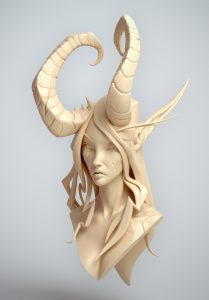 Vincent Ménier is in constant quest for mastery of the digital craft. And his works online is proof of his dedication to betterment.
Vincent Ménier is in constant quest for mastery of the digital craft. And his works online is proof of his dedication to betterment.
At the young age of 28 Mr. Ménier already has considerable industry experience through CCP Games, Ironklad Studios, and Unit Image. Recognizing that he can do well even on his own, he also takes in various freelance jobs. These aid, not only his talents and skills, but also his discipline of the self as he carries on with the journey to becoming the best digital artist he can possibly be. About his journey, he has this to say:
Be on a constant quest. Seriously, don’t just mindlessly crank out artwork after artwork. Give it thought. Where are you going personally? What do you want to say? Is it more about a specific aspect of your own growth than the artwork itself? It’s alright not to know but do try to keep these questions in mind as your voice reveals itself over time
Mr. Ménier is one artist who knows what he wants and where he is going to. So let’s take cues from him in this short feature and learn how we can apply his philosophies in digital art production to our own endeavors.
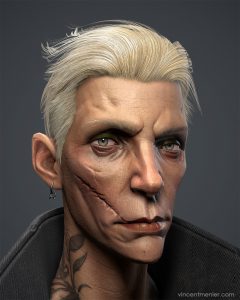 Xeno Creatives (XC): ZBrush technology brought a lot to the industry. What processes did you have to learn to be skilled in it?
Xeno Creatives (XC): ZBrush technology brought a lot to the industry. What processes did you have to learn to be skilled in it?
Vincent Ménier (VM): I think one of the key things to understand about ZBrush is that it “thinks” in its own way. When learning this particular piece of software, a newcomer should let go of his previous 3D habits and expectations in order to absorb what it has to offer. Once you understand the way ZBrush operates, you can start reconciling it with more traditional CG pipelines.
Past this step, it’s all art fundamentals and learning clever workflows to sculpt more complex elements.
XC: What are specific ZBrush features do you employ in the production of your art? Has it helped you in improving your art better?
VM: I would say ZBrush has allowed me to have a career in art altogether. Before learning ZBrush, I wasn’t quite sure what I wanted to do since all other software felt quite cold and rigid to me. I think tools like Dynamesh as well as the Brush and Masking systems were and still are very freeing to a lot of artists. It probably sounds like I’m stating the obvious here but if you think about what 3D modeling was before these tools were created, we went from the archaic world of pushing buttons to actually sculpting in digital space.
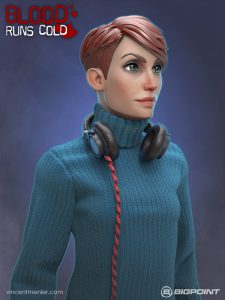 XC: How did you start being involved in the digital craft?
XC: How did you start being involved in the digital craft?
VM: After a short adventure studying business, I entered a VFX film school almost by chance. As a teenager I had always been passionate about video games and movies but it never crossed my mind that you could work in these industries. Nevertheless, I studied art in this school and another one after that but it took over six years before I knew I was actually going to give a serious shot at being a character artist.
For a long while I wanted to be a movie director, a game designer, or a writer. I was always more drawn towards disciplines that involved more “thinking” than actually materializing something visually. Indeed I was the worst student in most classes that involved anything practical whether it was on paper or on the computer. It turns out that a particular event in my life led me to being in a very difficult financial situation. I had to find a way to sustain myself quickly and the thing I was best at was pushing vertices, even though I was pretty terrible at it.
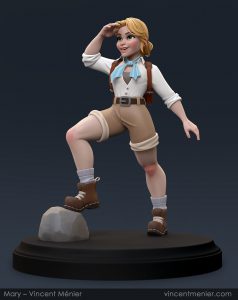 It took a couple of months but I managed to land a job and grew from there. In the process, I’ve actually found myself to enjoy certain aspects of the craft but also the path of self-betterment it involved. Learning discipline and focus but also acquiring further resilience and developing my social skills are extremely valuable parts of this ongoing journey.
It took a couple of months but I managed to land a job and grew from there. In the process, I’ve actually found myself to enjoy certain aspects of the craft but also the path of self-betterment it involved. Learning discipline and focus but also acquiring further resilience and developing my social skills are extremely valuable parts of this ongoing journey.
XC: What do you think is your edge as a 3D artist? What do you think makes you stand out from the rest?
VM: Now that’s a tough question to answer without sounding either pretentious or falsely humble! Alright let’s see how I find my way around this one 🙂
I believe that everyone has a natural predisposition for certain skills and that mine is not in art. You can definitely blast your way through a lot of doors using brutal amounts of work hours but it has its limits, especially in terms of the toll it will take on your health. The artistic fields being extremely competitive in general, it means I’m constantly strategizing through the tools at my disposal.
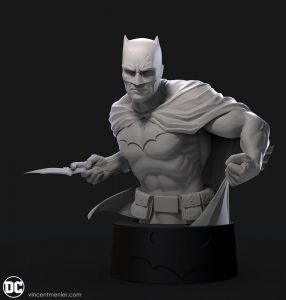
One of them is that I genuinely care about games and making games. Sounds obvious right? You’d be surprised how many artists I’ve worked with seem to only care about the number of assets they’ll be able to put in their portfolio once a project has ended. If you really care about the project, you’ll make sure to understand a little bit of every other discipline and strive to tailor your work to them while keeping the artistic integrity of whatever it is you are making. Such an attitude goes a long way towards giving you a voice inside a team and making you feel like you’re actually contributing to something bigger than your little pile of polygons.
XC: Whom do you do you consider your influence(s)?
VM: Vitaly Bulgarov is definitely the person who impacted my trajectory the most. His appearance on The Collective Podcast was a true revelation and set me on the path to regaining control of my time and becoming a more disciplined and focused person. Every year, I listen to this particular podcast once more and I often find new gems that were not accessible to me previously.
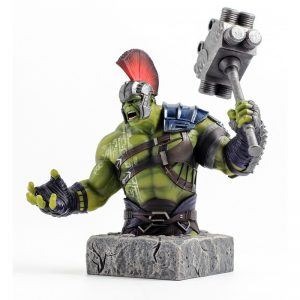
Then, I’d say my parents-in-law, who are both psychotherapists, had a massive impact since they allowed me to get a better understanding of my core motivations and fears. Thanks to them, I feel a lot less ashamed of who I am and I’m happy to keep pushing, learning and growing. It’s not to say that I don’t doubt anymore but I’m more confident with the idea that acting and making mistakes is a more viable path than staying immobile in the fear of failure.
XC: So far, what were the challenges that you had encountered working in the 3D industry?
VM: The most challenging thing always seems to be communication. It turns out that, in general, we humans are very poorly-skilled when it comes to conveying ideas. You wouldn’t think so with the seemingly infinite amount of tools at our disposal nowadays! It’s very complex to be precise in our speech, yet have empathy and acknowledge the person(s) we’re talking to. In my experience, poor communication has consistently been the key element that threatened or damaged a project.
There’s definitely steps you can take to improve this. For starters, always assume that the person you’re talking/writing to knows something that you don’t. Try to assess what this person’s needs are since they are probably different than yours, (especially if you have different job titles and responsibilities). If you don’t know, always ask! Showing that you care not only about your task but about others’ as well as the project in general is often very helpful.
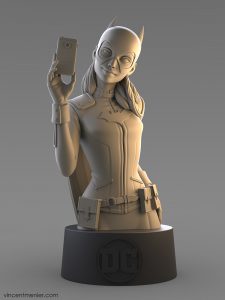 XC: What is your most exciting project to date?
XC: What is your most exciting project to date?
VM: The one I’m currently working on and I cannot talk about of course!
On a more serious note, it was very exciting to be able to contribute to Fortnite recently. It’s hard to encapsulate mentally the idea of working on a project that is touching so many people around the world.
XC: Do you have any advice to aspiring artists?
VM: Be on a constant quest. Seriously, don’t just mindlessly crank out artwork after artwork. Give it thought. Where are you going personally? What do you want to say? Is it more about a specific aspect of your own growth than the artwork itself? It’s alright not to know but do try to keep these questions in mind as your voice reveals itself over time. The answer might be that you simply want to be the best hard surface modeler that the industry has ever known, or maybe it’s a lot more subtle and abstract and will require your full attention.
Want to see more of Mr. Vincent Ménier? Click here!

